The history of RPGs
Our comprehensive guide to PC RPGs spanning four decades—from Dungeon to The Witcher 3.
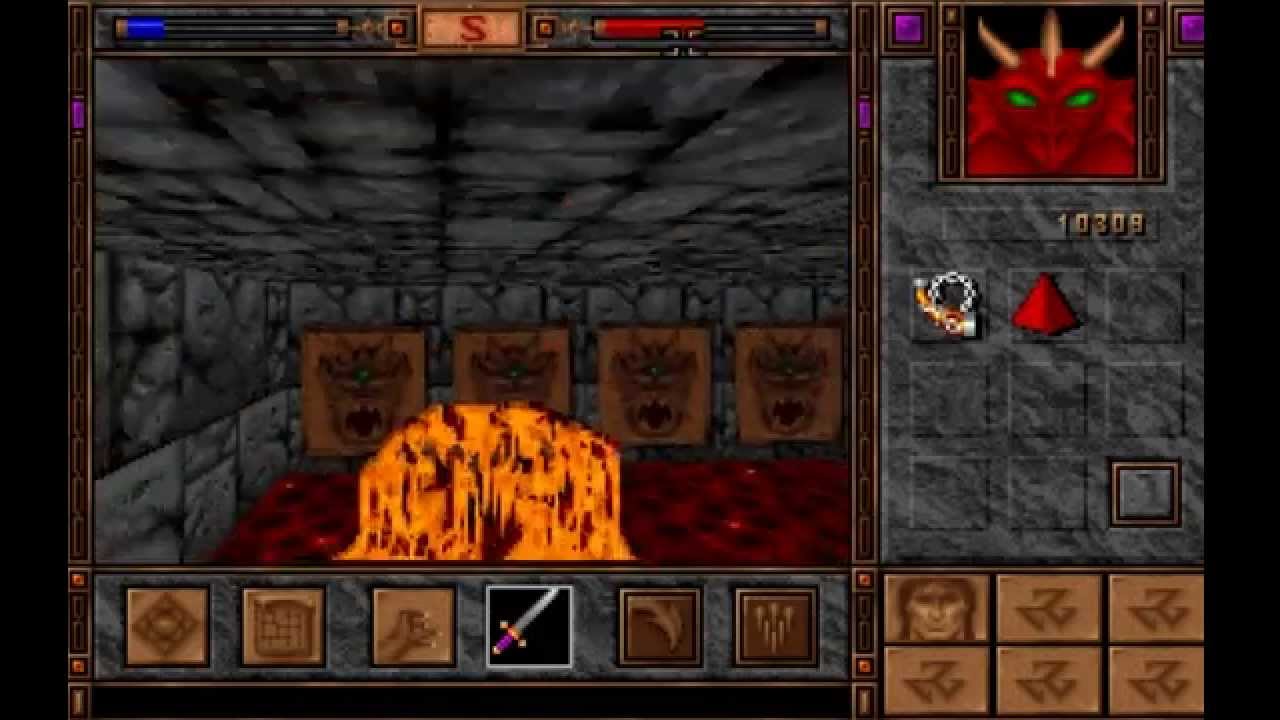
There’s a reason the ’90s are considered a golden age. Everything seemed possible. Every new game had the potential to be its own thing. Is Ultima Underworld, released in 1992, an evolution of dungeon crawlers like Dungeon Master? Yes, but to call it so is to do it a huge disservice.
Underworld wasn’t about fighting through a dungeon, but experiencing it. You play as Ultima’s Avatar, falsely accused of a crime and thrown into the Stygian Abyss with nothing but the clothes on your back. What you find is a living community with its own characters and histories. Learning to survive is learning to be part of it, trading for supplies and making allies. Creator Blue Sky Studios, later Looking Glass Systems, called it a dungeon simulator, pioneering a new way of exploring RPG spaces that would be refined in its sequel, its spiritual successor System Shock, and virtually ever other RPG.
This was the era where ideas and technology could go hand in hand, or so it felt at the time. In practice, there were obvious limitations—things like AI, the use of sprites, and low-resolutions. The price for Ultima Underworld’s real-time graphics and 3D engine was a viewport that barely took up more than a quarter of the screen. Its sequel boosted that to a third. But that was fine. This was a jaw-dropping achievement. To put it in context, Underworld came out before Wolfenstein 3D—both appearing mid-to-early 1992.
TO INFINITY & BEYOND: 1991—1997
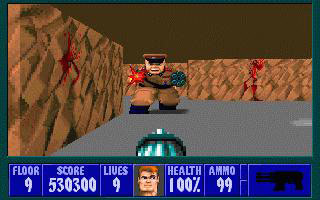
Bigger, not always better
Despite the potential, PC RPGs went into something of a slump in the early ’90s. A few major franchises were immune to this, particularly Ultima, and developers who were willing to take the plunge and risk everything could still be rewarded for it. Innovation, however, was becoming more and more expensive by the minute. RPGs typically lagged behind other genres in terms of immediate look and feel due to their complexity, and the difficulty of having a great looking game also provide tens of hours worth of entertainment (in many ways this was the flip-side of adventures, which shrank due to the graphics making it too expensive to have much game—particularly with the dawn of FMV). It’s not too surprising that many RPG studios desperately stuck with what had worked, much like many adventure game devs tried to hang on when their own genre began to feel the pinch. LucasArts and Sierra at least tried to evolve, and survived for the decade. Most others fell away, outside of the core German market that generously kept the genre alive no matter how bad many of the games got. (They got very, very bad.)
In RPGs, the key market was the hardcore fan, and they weren’t easy to please. The simplest approach for most companies was to do more or less what they’d been doing and hope to either sell enough copies to allow them to do another, or trim down in the hope of attracting a different audience. Origin’s ShadowCaster for instance, released in 1993, removing almost all the expected RPG elements that existing players would be used to, aiming to sell the experience on its shapeshifting gimmick—the main character being able to turn into creatures like a four-armed cat warrior or a not particularly awe-inspiring dragon. SSI got into this with Al-Qadim, a far more Legend of Zelda-style RPG than its usual fare. The genre was, after all, doing well on other platforms, with the SNES getting both Final Fantasy VI and Chrono Trigger, along with two different versions of Shadowrun, compared to the PC’s none.
These stripped down PC RPGs didn’t really work. New players weren’t brought on board, and ‘real’ RPG fans wanted something with more oomph. The market also provided a steady stream of solid but ultimately forgettable D&D games, including a couple of Ravenloft titles—Ravenloft being AD&D’s primary horror setting, full of vampires and other nasties that went bump in the night; the almost unspellable Menzoberranzan, set in the spidery parts of Forgotten Realms; and the post-apocalyptic Dark Sun, which stumbled out of the gate by not being quite finished at release.
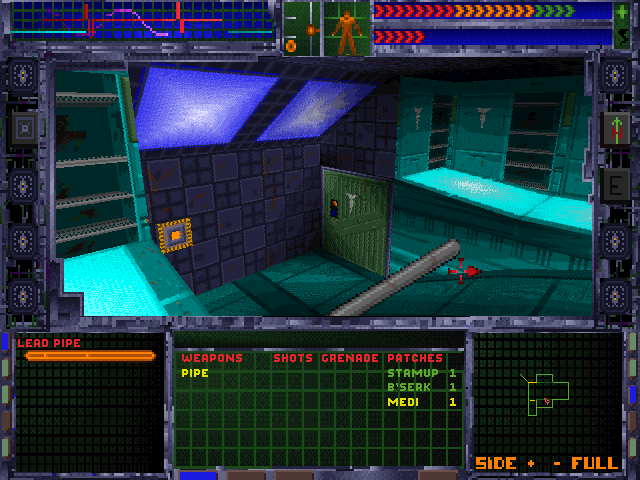
Hunting for treasure
This isn’t to say that there weren’t popular RPGs, or RPGs worth remembering. Sierra’s Betrayal at Krondor was a fun attempt at a heavily narrative driven one. Jagged Alliance 2 combined strategy and RPGs like no other game before or since. Most big names, though, did eventually become watchwords for failure. Even Ultima blotted its copybook with the eighth game, Pagan, by switching to a terrible engine and a tiny world full of frustration. Interplay’s Stonekeep largely nailed the coffin shut on dungeon crawlers, due mostly to taking five years to make and only having a generic-but-pretty game to show for it. By far the biggest failure of the era was Descent To Undermountain, a game that spent years in development, and used an already outdated engine—designed for 3D shooter series Descent—to make an RPG. This went about as well as could be expected. In the end, Interplay just shipped what it had and washed its hands of it. (A couple of years later, its far better game Fallout 2 openly mocked it. One of the lines that could randomly pop out of a Magic 8-Ball, along with the likes of ‘Reply hazy, try again’, was ‘Yes, we KNOW Descent To Undermountain was crap.’)
Keep up to date with the most important stories and the best deals, as picked by the PC Gamer team.
Despite this, the ’90s produced some amazing RPGs. 1994’s System Shock was Looking Glass attempting to go beyond Underworld by thinking differently. The designers had been unhappy that, for all Underworld’s detail, much of it was artificial—like how conversations pulled you out of the game into a whole other interface. The solution? Kill everyone. That allowed the player to explore the devastated Citadel Station without ever being forced between interfaces, with character interaction replaced by one-way communications between them and SHODAN, the evil AI controlling the station. It was done so well that the absence of people wasn’t felt at all. The only catch was that telling the backstory by means of audio-logs—then a genius idea—is now overdone to the point of South Park: The Stick Of Truth not so much mocking as murdering the entire concept.
Even things that didn’t work out are worth remembering. Just about everyone knows System Shock, but few remember Psygnosis’ Sentient from 1997—a similar idea, only on a living space station full of characters who go about their lives both automatically and based on a complex conversation system that allows you to give orders. It’s janky, it doesn’t always work, and even when it does, it’s not that much fun. But it’s a great demonstration of ’90s ambition in action. So too was Robinson’s Requiem and Deus, from 1994 and 1996. Both are survival games, with the first about surviving on a hostile planet and the second about being a very easily wounded bounty-hunter. Both are notable for their complex medical systems. Get an infected leg? You’d better hope you have the tools you need to sort it, or you’ll swiftly collapse. You might find yourself amputating your own limbs, or having an eye pecked out—spending the rest of the game staring at the side of your nose.
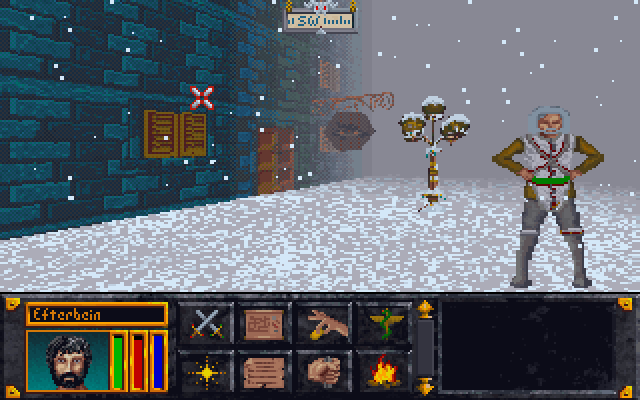
Victory in the arena
Amusingly, the biggest RPG success story of the ’90s was never meant to be one. Bethesda, then a largely unknown company despite a couple of Terminator and Wayne Gretzy games, was making a relatively simple gladiatorial combat game called Arena in which you’d take a team of fighters around the fantasy world of Tamriel in the hope of making some cash. During development, the ultimate feature creep set in. First a few RPG elements were added to the mix. Then dungeons. Then quests. And then the whole arena combat thing was ditched in favour of it just being a regular, single-character RPG. The title stuck around solely because the marketing materials had already been printed, with the team handwaving it as Tamriel being so dangerous that the whole place was nicknamed ‘the Arena’. To make it sound more of an RPG, they then stuck on the name ‘The Elder Scrolls’.
The Elder Scrolls raised many bars. Visually, it looked fantastic for the time. The map is about six million square kilometres in size, though almost all of it created using procedural generation (of its several hundred dungeons, only around 15 are actually connected to the plot.) It has day and night cycles. It’s got weather systems. Unfortunately, Arena also has more bugs than a lifelong entomologist, and a starting difficulty best described as ‘psychotic’ (Elder Scrolls III designer Ken Rolston admitted to having started it over 20 times and only getting out of the tutorial dungeon once).
Bad marketing led to just 3,000 copies sold out of the gate, which co-designer Ted Peterson later commented was less than the sales of his Terminator: 2029 expansion. And Terminator: 2029 was, putting it kindly, garbage.
And for all of that, it bombed. Bad marketing led to just 3,000 copies sold out of the gate, which co-designer Ted Peterson later commented was less than the sales of his Terminator: 2029 expansion. And Terminator: 2029 was, putting it kindly, garbage. Word of mouth saved the day, and two years later Bethesda released Daggerfall. This one was only the size of Great Britain and no less buggy. While players looking for a deep story were disappointed, nothing had offered anything close to its level of freeform adventuring—with guilds to join, several religions, the ability to create your own magic spells, and become a vampire or werewolf. Plus, it had box art that gave some idea of what the game was about, rather than being fronted by a sword-wielding lady in a poorly fitting bikini.
Later games would radically shrink the size of the worlds to allow for hand- crafted design, at the expense of the freedom and range of options, but we all know how that story ends. Instead of killing Bethesda, The Elder Scrolls series now sells millions of copies, and is one of the most popular RPG franchises ever.

War. War changes dramatically
Some games land softly. Others land with the force of a nuclear bomb. In the desolate year of 1997, Fallout was definitely one of those. It was the spiritual sequel to Wasteland, though the two were actually quite different takes on the post-apocalyptic world. Wasteland was more comedic and surreal, with Monty Python style killer badgers, as well as more futuristic and developed—the world had ended, but civilisation had largely rebuilt. There was greenery. There was water processing. Your role was that of a Desert Ranger, assigned to keep the radioactive landscape safe from do-badders, and foil evil plots as time permitted. Fallout, meanwhile, used the 1950s as a jumping off point for a far more desolate, less reconstructed world of psychopaths, mutants, drug-dealers and all the other scum that you can imagine rising to the top. Your goal was simple—retrieve a water chip so that your protected Vault could continue hiding from the outside world. For you, hiding was not an option.
Fallout was the most adult, most brutal RPG around at the time, not because other RPGs hadn’t had bad people in them, but because this time it was entirely up to you if you joined them. It’s dark. It’s cynical. It’s also one of the most beautifully designed RPGs around. Create a low-intelligence character, for instance, and all your dialogue is replaced with little more than incoherent grunts. Follow the path it lays out for you and you get a great tour around the world, but it’s so open that if you know what you’re doing, it’s possible to run to the end and just finish it in about ten minutes.
Its Perk and Traits system allowed incredible character creation abilities, with skills ranging from Mysterious Stranger, which would sometimes spawn an ally in combat, to Bloody Mess, guaranteeing that every kill-shot ends as messily as possible. It was funny. It was challenging. It was huge and complex, despite the relatively small map. It was everything that players had been crying out for, with the exception, perhaps, of looking a bit prettier. And, like most of the best RPGs of the decade, it almost got killed. Interplay wanted real-time combat instead of turn-based, and favoured multiplayer action over single-player—a focus based on the runaway success of Blizzard’s Diablo.
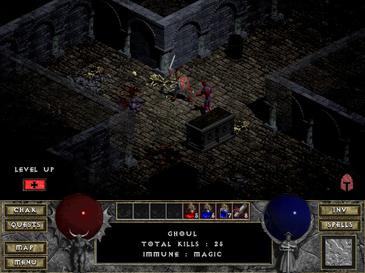
The shadow of Fallout still lingers over the more recent games, which are part of the same universe, but very different in style. Fallout 4 in particular is essentially a shooter strapped to a building game, where conversations inevitably end in bloodshed. This is a far cry from Fallout, a game where you can defeat the final boss by convincing him that his plans for a mutated wasteland simply aren’t going to work. The sequel, Fallout 2, also features one of the most beloved locations in any RPG—the city of New Reno, where RPG design superstar and living Kickstarter stretch goal Chris Avellone first came to people’s attention. New Reno is a gloriously seedy place full of feuding mobsters and opportunities for violence, as well as the memorable chance to have your hero become a porn star (complete with a porn star name, such as ‘Arnold Swollenmember’).
The main problem with Fallout 2, as well as being rushed out and suffering from the buggy RPG problem that afflicted many a ’90s game, ended up being a lesson to everyone. Fallout occasionally enjoyed a naughty pop-culture reference or two, which players appreciated. However, hearing that, and with every designer having their own section, Fallout 2 often feels like nothing but shout-outs to everything from Tom Cruise and Scientology to Monty Python and the Holy Grail. It broke much of the sense of place, and proved that yes, you can indeed have too much of a good thing. It’s not that later games would stop making pop culture references—WoW loves its little nods. After Fallout 2, though, most designers just needed to be told ‘remember Fallout 2?’ to know when to tone it down a bit.
As the decade ended, it became clear that they would have the chance. Despite a few franchises riding high throughout, there hadn’t been much to laugh about during the majority of the ’90s. That energy had to be spent on simply staying alive, and keeping the genre going. With Fallout and The Elder Scrolls, though, it finally had the shot in the arm it needed. And in 1998, the tables would turn.
Page 3 of our history of RPGs visits the genre between 1998—2002.

